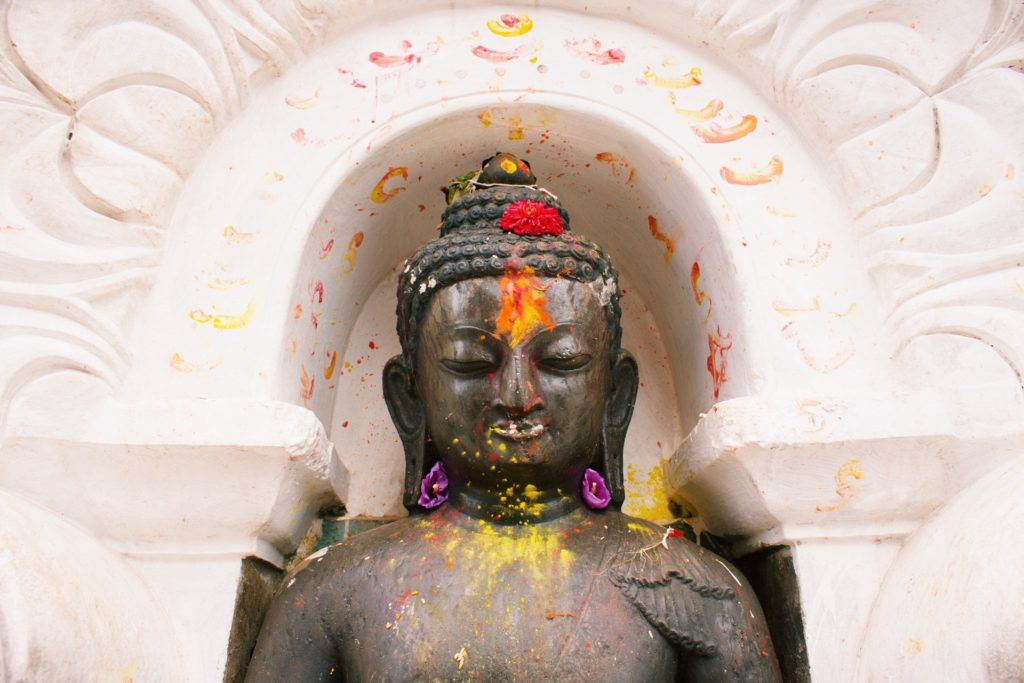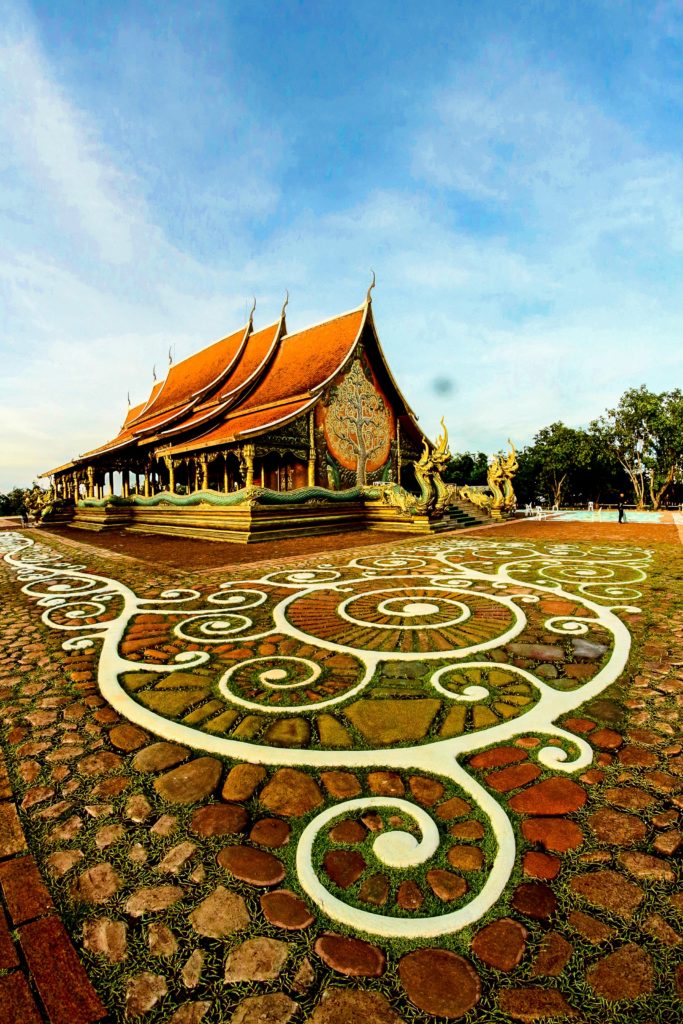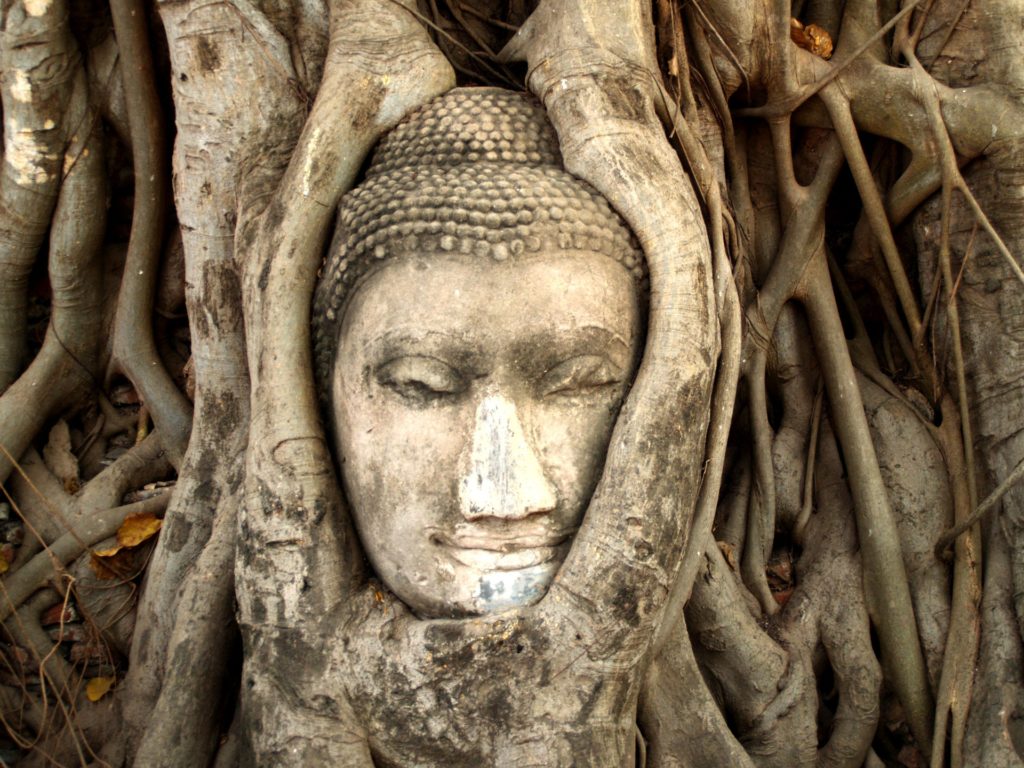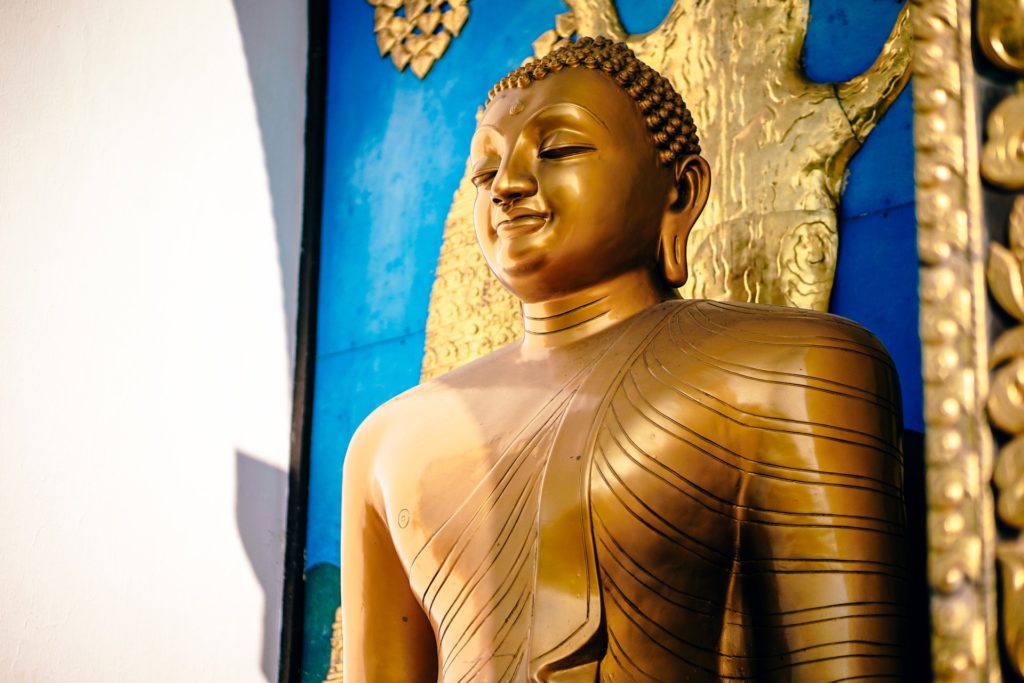
Sila is the concept of moral virtues, that is the second group and an integral part of the Noble Eightfold Path. It consists of right speech, right action, and right livelihood.
Śīla appears as ethical precepts for both lay and ordained Buddhist devotees. It includes the Five Precepts for laypeople, Eight or Ten Precepts for monastic life, as well as rules of Dhamma (Vinaya or Patimokkha) adopted by a monastery.

Precepts
Buddhist scriptures explain the five precepts (Pali: pañcasīla; Sanskrit: pañcaśīla) as the minimal standard of Buddhist morality. It is the most important system of morality in Buddhism, together with the monastic rules. The five precepts apply to both male and female devotees, and these are:
- Abstain from killing (Ahimsa)
- Abstain from stealing
- Abstain from sensual (including sexual) misconduct
- Abstain from lying
- Abstain from intoxicants
Undertaking and upholding the five precepts is based on the principle of non-harming (Pāli and Sanskrit: ahiṃsa). The Pali Canon recommends one to compare oneself with others, and on the basis of that, not to hurt others. Compassion and a belief in karmic retribution form the foundation of the precepts. Undertaking the five precepts is part of regular lay devotional practice, both at home and at the local temple. However, the extent to which people keep them differs per region and time. They are sometimes referred to as the śrāvakayāna precepts in the Mahāyāna tradition, contrasting them with the bodhisattva precepts.
The five precepts are not commandments and transgressions do not invite religious sanctions, but their power has been based on the Buddhist belief in karmic consequences and their impact in the afterlife. Killing in Buddhist belief leads to rebirth in the hell realms, and for a longer time in more severe conditions if the murder victim was a monk. Adultery, similarly, invites a rebirth as prostitute or in hell, depending on whether the partner was unmarried or married. These moral precepts have been voluntarily self-enforced in lay Buddhist culture through the associated belief in karma and rebirth. Within the Buddhist doctrine, the precepts are meant to develop mind and character to make progress on the path to enlightenment.

The monastic life in Buddhism has additional precepts as part of patimokkha, and unlike lay people, transgressions by monks do invite sanctions. Full expulsion from sangha follows any instance of killing, engaging in sexual intercourse, theft or false claims about one’s knowledge. Temporary expulsion follows a lesser offense. The sanctions vary per monastic fraternity (nikaya).
Lay people and novices in many Buddhist fraternities also uphold eight (asta shila) or ten (das shila) from time to time. Four of these are the same as for the lay devotee:
- no killing
- no stealing
- no lying
- no intoxicants
The other four precepts are:
- No sexual activity
- Abstain from eating at the wrong time (e.g. only eat solid food before noon)
- Abstain from jewellery, perfume, adornment, entertainment
- Abstain from sleeping on high bed i.e. to sleep on a mat on the ground
All eight precepts are sometimes observed by lay people on uposatha days: full moon, new moon, the first and last quarter following the lunar calendar. The ten precepts also include abstaining from accepting money.
In addition to these precepts, Buddhist monasteries have hundreds of rules of conduct, which are a part of its patimokkha.

Vinaya
Vinaya is the specific code of conduct for a sangha of monks or nuns. It includes the Patimokkha, a set of 227 offenses including 75 rules of decorum for monks, along with penalties for transgression, in the Theravadin tradition. The precise content of the Vinaya Pitaka (scriptures on the Vinaya) differs in different schools and tradition, and different monasteries set their own standards on its implementation. The list of pattimokkha is recited every fortnight in a ritual gathering of all monks. Buddhist text with vinaya rules for monasteries has been traced in all Buddhist traditions, with the oldest surviving being the ancient Chinese translations.
Monastic communities in the Buddhist tradition cut normal social ties to family and community, and live as “islands unto themselves”. Within a monastic fraternity, a sangha has its own rules. A monk abides by these institutionalized rules, and living life as the vinaya prescribes it is not merely a means, but very nearly the end in itself. Transgressions by a monk on Sangha vinaya rules invites enforcement, which can include temporary or permanent expulsion.
